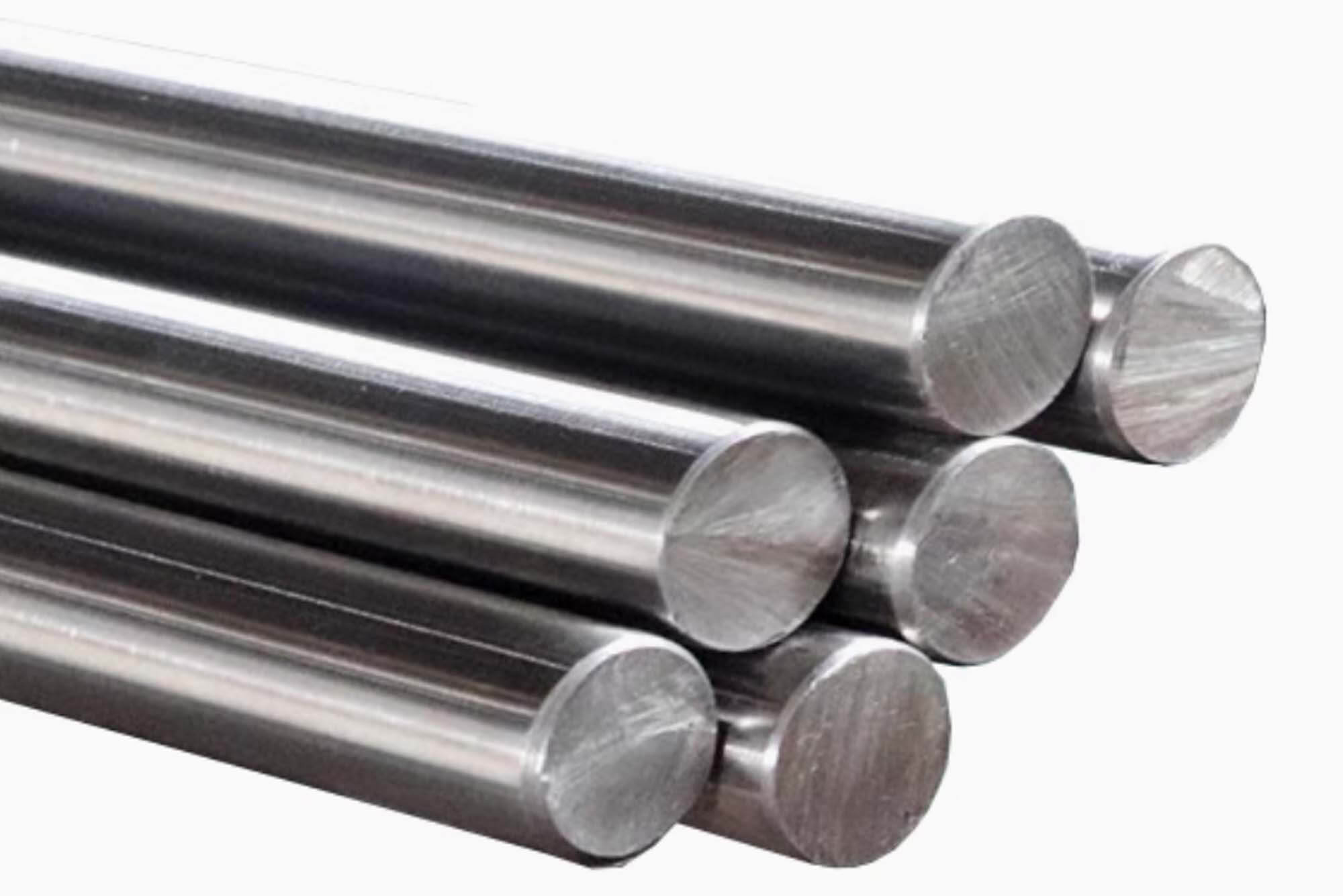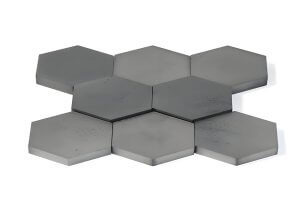Why Low Carbon Steel Is Ideal for CNC Machining
Low carbon steel, often referred to as mild steel, is a versatile material favored across industries for its balance between affordability and performance. Having worked extensively with CNC machining, I’ve found low carbon steel to be a consistent, reliable material choice for custom components. Custom machining of low carbon steel offers excellent flexibility, allowing for a wide range of complex shapes and designs. Whether in automotive, construction, or manufacturing sectors, this material helps maintain high product quality while minimizing production costs. Its properties make it particularly suitable for CNC machining processes, where precision and efficiency are key. CNC machined parts made from low carbon steel benefit from its excellent machinability and low material cost, ensuring both quality and value.
In this guide, I will explore the benefits and practical uses of low carbon steel in CNC machining. Drawing from personal experience and insights, I will highlight why low carbon steel stands out as a material that offers both cost-effectiveness and reliability.
Material Properties of Low Carbon Steel and Their Impact on CNC Machining
Low carbon steel contains between 0.05% and 0.25% carbon, which results in specific mechanical properties that make it easier to work with during CNC machining compared to higher carbon steels. Some of the key material properties that affect CNC machining include:
2.1 Ductility and Formability
Low carbon steel is highly ductile, meaning it can be bent, shaped, or cut with minimal risk of fracture or damage. This property is particularly beneficial in CNC machining processes where precise cutting and forming are essential. Due to its flexibility, low carbon steel can be used to create complex shapes, which would be more challenging with harder metals.
2.2 Strength and Durability
Although low carbon steel has less strength than medium and high carbon steels, it still provides enough structural integrity for many industrial applications. Parts machined from low carbon steel can withstand moderate stress and loads, making it suitable for components that require a balance between flexibility and durability.
2.3 Machinability
Thanks to its relatively low hardness, low carbon steel offers excellent machinability. This means that CNC machining can achieve high levels of accuracy and precision without excessive tool wear. In my own work with this material, I’ve seen how it allows for faster cutting speeds and reduced production times, which can make a significant difference in large-scale production runs.
Table 1: Comparison of Low Carbon Steel Properties with Other Steel Types
| Property | Low Carbon Steel | Medium Carbon Steel | High Carbon Steel |
|---|---|---|---|
| Carbon Content | 0.05% – 0.25% | 0.25% – 0.60% | 0.60% – 1.5% |
| Tensile Strength | Moderate | High | Very High |
| Ductility | High | Moderate | Low |
| Machinability | Excellent | Good | Difficult |
| Weldability | Excellent | Moderate | Poor |
| Cost | Low | Moderate | High |
This comparison highlights the advantages of low carbon steel, particularly its machinability and affordability, which are crucial for companies focusing on cost-effective production.
Cost-effectiveness of Using Low Carbon Steel in CNC Machining
Low carbon steel is one of the most cost-effective materials available for CNC machining. Having worked on projects that involve producing both high-precision and high-volume parts, I’ve seen firsthand how low carbon steel can help companies save significantly on both material and machining costs. Here’s how:
3.1 Lower Material Costs
Low carbon steel is relatively inexpensive compared to other metals such as stainless steel, aluminum, and titanium. Its lower cost doesn’t compromise its mechanical properties, making it a prime choice for industries looking to optimize their production budgets without sacrificing quality.
3.2 Reduced Tool Wear and Maintenance Costs
In CNC machining, the choice of material directly affects tool wear and maintenance. Since low carbon steel is less abrasive than harder metals, it causes less wear on cutting tools. In my experience, this means fewer tool replacements and lower maintenance costs over time. For large-scale production runs, this can translate into significant savings.
3.3 Faster Machining Speeds
Due to its excellent machinability, low carbon steel can be machined at higher speeds compared to harder steels, reducing production times. This faster machining process helps manufacturers increase output without compromising accuracy or precision.
Table 2: Cost Comparison of Common Metals in CNC Machining
| Material | Cost per kg (USD) | Machinability | Average Tool Wear |
|---|---|---|---|
| Low Carbon Steel | $0.50 – $0.70 | Excellent | Low |
| Aluminum | $1.50 – $2.00 | Good | Moderate |
| Stainless Steel | $2.00 – $2.50 | Moderate | High |
| High Carbon Steel | $1.00 – $1.50 | Difficult | Very High |
As shown in the table, low carbon steel not only has a lower material cost, but it also minimizes tool wear and machining difficulties, making it an attractive choice for budget-conscious projects.
Customization Options and CNC Techniques for Low Carbon Steel
One of the reasons low carbon steel is so widely used in CNC machining is its versatility. It offers numerous customization options, allowing engineers to produce a wide range of parts for different industries. In my experience, this flexibility has been key to meeting customer demands for precision, performance, and cost-efficiency. Here are the primary CNC techniques used to customize low carbon steel:
4.1 Milling and Turning
Milling and turning are two of the most common CNC machining processes used for low carbon steel. Milling involves removing material from a workpiece to create flat surfaces, complex contours, and intricate designs. Turning, on the other hand, is used to create cylindrical parts, which is essential in producing shafts, gears, and other rotating components.
Due to the machinability of low carbon steel, both milling and turning can be performed with high accuracy, resulting in minimal tool wear and faster production times. These techniques are particularly useful in industries like automotive and machinery, where precision and efficiency are critical.
4.2 Drilling, Tapping, and Boring
Low carbon steel is highly suitable for drilling and tapping operations, which involve creating holes and internal threads in a workpiece. This makes it ideal for producing fasteners, structural components, and mechanical assemblies. Tapping allows for the creation of precise threads, which is essential in industries such as automotive, where bolts and screws need to fit securely.
Boring is another process used to enlarge holes in a workpiece, ensuring precise fitment for components that need tight tolerances. In my work, drilling and tapping low carbon steel has been particularly effective in creating custom components that require durable and reliable fastening systems.
4.3 Heat Treatment and Surface Treatments
After machining, low carbon steel parts can undergo various surface treatments to enhance their performance. Common surface treatments include galvanizing, painting, and powder coating. These treatments provide added corrosion resistance and durability, especially for parts exposed to harsh environments.
Heat treatment, such as carburizing, can be applied to improve the hardness and wear resistance of low carbon steel. This process diffuses carbon into the surface of the steel, creating a hard outer layer while maintaining a ductile core. This is especially useful for parts that experience high wear, such as gears and other mechanical components.
Applications of Low Carbon Steel CNC Machined Parts
Low carbon steel is used in a wide range of industries due to its excellent machinability, affordability, and versatility. From my experience working on various CNC projects, I’ve seen how low carbon steel is applied in the following areas:
5.1 Automotive Industry
In the automotive industry, low carbon steel is used to manufacture a variety of components, including engine mounts, brackets, fasteners, and transmission parts. Its balance of strength and ductility makes it ideal for parts that must endure mechanical stress while maintaining precise tolerances. CNC machining allows for the production of complex shapes with high accuracy, which is crucial in automotive manufacturing.
For example, low carbon steel gears and shafts can be CNC-machined to tight tolerances, ensuring smooth operation and long-lasting performance in vehicle engines and transmissions. The material’s affordability also helps automotive manufacturers keep production costs under control.
5.2 Construction Industry
In construction, low carbon steel is used for structural components, including beams, columns, and fasteners. CNC machining allows for the creation of custom components that can be precisely fabricated to meet the specifications of a given project. Additionally, low carbon steel’s weldability makes it easy to assemble these components on-site, reducing construction time and costs.
Low carbon steel’s corrosion resistance can be enhanced through surface treatments like galvanizing or powder coating, which is important for outdoor applications where components are exposed to the elements. In my experience, low carbon steel is a go-to material for building structures due to its cost-effectiveness and reliability.
5.3 Machinery and Equipment Manufacturing
Low carbon steel is also widely used in machinery and equipment manufacturing. Components such as machine frames, gears, and shafts are often machined from low carbon steel due to its excellent machinability and strength. In my work, I’ve seen how CNC machining can produce highly accurate machine parts that are essential for maintaining the functionality and performance of industrial equipment.
For example, CNC-machined low carbon steel gears are commonly used in mechanical systems where precise movement and durability are required. The material’s ability to withstand wear and tear makes it an ideal choice for long-lasting machine components.
5.4 Energy and Power Generation
In the energy sector, low carbon steel is used to produce components for power plants, pipelines, and renewable energy systems. Its machinability allows for the
In the energy sector, low carbon steel is used to produce components for power plants, pipelines, and renewable energy systems. Its machinability allows for the production of precise parts necessary for equipment used in energy production, such as turbines, generators, and structural components in renewable energy facilities like wind farms.
In my own experience, low carbon steel has proven to be a highly adaptable material for CNC-machined parts that need to meet the rigorous demands of the energy sector. For example, low carbon steel components used in wind turbines require precise machining to ensure long-lasting performance and efficiency, particularly in extreme weather conditions.
Environmental Benefits of Using Low Carbon Steel in CNC Machining
Low carbon steel offers several environmental advantages, making it an excellent choice for companies looking to reduce their carbon footprint. Since low carbon steel is 100% recyclable, it can be reused multiple times without losing its properties, helping to reduce waste in manufacturing. Additionally, its production requires less energy than higher carbon steels or other alloys, making it a more sustainable material choice.
The recyclability of low carbon steel also means that at the end of a product’s lifecycle, the steel can be melted down and repurposed for new projects. This circular approach to manufacturing not only conserves resources but also reduces the environmental impact associated with mining and producing new materials.
Conclusion
In conclusion, low carbon steel continues to be a top material for CNC machining due to its affordability, machinability, and versatility. Over the years, I’ve seen how this material consistently delivers reliable results across a wide range of industries, from automotive and construction to energy and machinery.
By choosing low carbon steel, companies can achieve high precision in their machined parts while keeping production costs under control. Whether you need custom components for vehicles, structural elements for buildings, or durable machine parts, low carbon steel offers the flexibility and performance needed to meet your project’s demands.
FAQ
- What is low carbon steel, and why is it commonly used in CNC machining?
Low carbon steel, also known as mild steel, contains 0.05% to 0.25% carbon by weight. It is commonly used in CNC machining due to its affordability, high machinability, and weldability. These properties make it an ideal choice for custom parts across various industries. - How does low carbon steel compare to other materials in terms of machinability?
Low carbon steel has excellent machinability compared to other materials like high carbon steel or stainless steel. Its lower hardness allows for easier cutting, shaping, and forming, making it faster to machine and reducing tool wear during the CNC process. - Can low carbon steel be heat-treated after CNC machining?
Yes, low carbon steel can undergo heat treatments such as carburizing or case hardening to enhance its surface hardness and wear resistance. While its core remains soft and ductile, the hardened surface layer improves the part’s durability, especially for high-wear applications like gears or shafts. - Is low carbon steel suitable for welding after CNC machining?
Low carbon steel is excellent for welding, making it a versatile material for post-machining fabrication. It’s critical to clean the surfaces of any oils or machining fluids before welding to ensure clean welds. For thicker parts, preheating may be required to prevent cracking. - What are the most common applications of CNC machined low carbon steel parts?
Low carbon steel is widely used in industries such as automotive, construction, machinery, and energy. Typical applications include structural beams, brackets, fasteners, gears, and machine components. Its balance between strength, flexibility, and cost-effectiveness makes it suitable for a wide range of projects. - What are the environmental benefits of using low carbon steel in CNC machining?
Low carbon steel is highly recyclable, contributing to its environmental benefits. It can be melted down and reused multiple times without losing its properties, reducing waste in manufacturing processes. Additionally, producing low carbon steel requires less energy than higher alloy steels, which helps reduce the overall carbon footprint. - Are there any challenges when machining low carbon steel with CNC equipment?
While low carbon steel is generally easy to machine, achieving a high-precision surface finish may require additional treatments like galvanizing or painting. Its soft nature can also lead to minor deformation during machining if not properly supported, but these challenges can be mitigated with proper tooling and techniques. - Does low carbon steel require special tools for CNC machining?
Standard tools such as high-speed steel (HSS) or carbide tools can be used for machining low carbon steel. However, using coated tools, like those with titanium nitride (TiN) coatings, can further reduce tool wear and increase efficiency during extended production runs. - How does low carbon steel perform in high-temperature environments?
Low carbon steel can withstand moderate temperatures, but for applications involving extreme heat, higher carbon steels or alloyed steels may be more appropriate. Surface treatments like heat-resistant coatings can enhance its performance in high-temperature environments. - How can the surface finish of low carbon steel be improved after CNC machining?
After machining, low carbon steel surfaces can be improved with treatments such as polishing, galvanizing, powder coating, or painting. These treatments not only enhance the aesthetic finish but also improve corrosion resistance and durability, especially in outdoor or high-moisture environments.
Other Articles You Might Enjoy
- Comprehensive Guide to CNC Machining: Carbon Steel vs Stainless Steel
Choosing the right material for CNC machining is a crucial decision for any manufacturer or engineer. Two of the most commonly used materials in various industries are carbon steel and…
- What Factors Should You Consider When Selecting a Precision CNC Machining Partner for Carbon Steel?
What Are the Key Technical Challenges in Precision CNC Machining of Carbon Steel? Precision CNC machining of carbon steel involves several technical challenges that need to be addressed to achieve…
- The Essential Guide to Selecting the Right Metal for CNC Machining: Stainless Steel vs. Carbon Steel
Introduction to CNC Machining and Metals In the realm of creation and manufacturing, Computerized Numerical Control (CNC) machining serves as a critical tool. It is an advanced system involving the…
- Innovative CNC Machining for the Aerospace Sector
Innovative CNC Machining for the Aerospace Sector CNC machining, an abbreviation for Computer Numerical Control machining, stands as a vital player within today's manufacturing scene. Utilizing computer-generated code to control…
- Streamlining CNC Machining for Lightweight Metals( alloy steel Veromca)
In recent years, computer numerical control (CNC) machining has emerged as a highly efficient method for processing various types of materials—including lightweight metals. Efficient in operation and precise in execution,…
- Precision CNC Machining of Steel: High-Volume Production
Precision CNC Machining and High-Volume Production As an integral part of modern manufacturing processes, Precision Computer Numerical Control (CNC) machining brings about unmatched accuracy and consistency in the production of…






